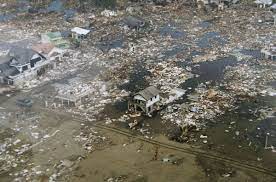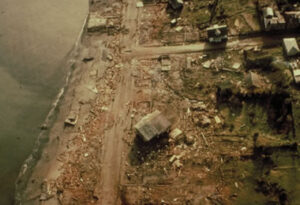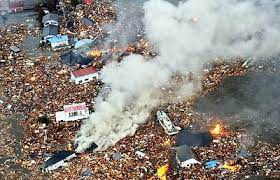-
Safest Place During Earthquake Inside the House
The safest place to be during an earthquake inside a house is under a sturdy desk, table, or interior wall. Here’s why:
- Under a desk or table: This provides a low profile and a small area of protection from falling objects and debris.
- Against an interior wall: Interior walls are less likely to collapse than exterior walls, and they provide protection from falling objects and debris.
- Away from windows and heavy objects: Stay away from windows, mirrors, and heavy objects that can break and cause injury.
It’s important to remember that no place inside a building is completely safe during an earthquake. The goal is to reduce the risk of injury and damage as much as possible by taking cover in a safe place and protecting yourself from falling objects and debris.
2. Better to Stay Inside the House instead of Rushing Outside
In general, it’s safer to stay inside the house during an earthquake rather than rush outside. Here’s why:
- Protection from falling debris: Staying inside the house provides protection from falling debris, such as bricks, roof tiles, and glass that can cause injury.
- Reduced risk of injury from falling: The shaking from an earthquake can make it difficult to maintain balance, increasing the risk of falling and injury. Staying inside the house reduces this risk.
- Structural stability: A well-built house is more likely to withstand the shaking of an earthquake than a person is. Staying inside the house can provide some level of protection.
However, if you’re near a coast and there is a risk of a tsunami, or if you’re in a high-rise building and there is a risk of the building collapsing, you should evacuate and move to a safe location immediately. Always listen to the advice of local authorities and follow their recommendations for how to respond during an earthquake.
3. Birds/Animals Early Warning
There have been reports of animals exhibiting unusual behaviour before earthquakes, but the scientific evidence for this is limited and mixed. Some studies have shown that certain animals, such as dogs, cats, and birds, can detect earthquakes before they happen, while others have shown no significant changes in animal behaviour before earthquakes.
The mechanisms by which animals might be able to detect earthquakes are not well understood, but some possible explanations include:
- Sensitivity to changes in air pressure or ground vibrations: Some animals may be able to detect changes in air pressure or ground vibrations that occur before an earthquake.
- Electro-magnetic signals: Some animals may be able to detect changes in the Earth’s electromagnetic field that occur before an earthquake.
- Other factors: Other factors, such as changes in the behaviour of other animals or changes in the environment, may also be contributing to the observed changes in animal behaviour before earthquakes.
Despite the limited and mixed evidence, some scientists believe that animals have the potential to provide valuable information about earthquakes and could be used as an early warning system. However, more research is needed to better understand the relationship between animal behaviour and earthquakes and to develop reliable methods for using animals to predict earthquakes.
4. What to Do While in Sleep
If you wake up during an earthquake, it’s best to move to a safer place as soon as possible. Here’s what you can do:
- Stay low: Crawl on your hands and knees to reduce the risk of injury from falling objects and debris.
- Take cover: Get under a desk, table, or against an interior wall to provide protection from falling objects and debris.
- Avoid windows and heavy objects: Stay away from windows, mirrors, and heavy objects that can break and cause injury.
If you’re unable to move to a safer place, stay in bed and protect your head and neck with a pillow. Covering yourself with a blanket can also provide some protection from falling debris.
Remember that no place inside a building is completely safe during an earthquake, but taking cover and protecting yourself from falling objects and debris can reduce the risk of injury.
5. Effects and Precaution of Earthquake
Effects of Earthquake
- Property damage: Earthquakes can cause significant damage to buildings, bridges, roads, and other structures.
- Landslides: Earthquakes can trigger landslides and rock falls, causing damage to buildings and roads and blocking transportation routes.
- Tsunamis: Earthquakes that occur under the ocean can generate tsunamis, which can cause widespread damage and flooding along coastlines.
- Fire: Earthquakes can also cause fires, either by breaking gas lines or by damaging electrical systems.
- Loss of life: Earthquakes can cause loss of life and injury, either directly as a result of the shaking or from secondary effects such as fires, landslides, or tsunamis.
Precautions of Earthquakes
- Building codes: Constructing buildings to meet earthquake-resistant building codes can reduce the risk of damage and collapse during an earthquake.
- Emergency supplies: Having emergency supplies on hand, such as food, water, medicine, and a flashlight, can help you survive and recover from an earthquake.
- Earthquake insurance: Having earthquake insurance can provide financial assistance for rebuilding and repairing damage caused by an earthquake.
- Disaster plan: Having a disaster plan in place, including evacuation routes and a designated meeting place, can help you respond effectively during and after an earthquake.
- Regular earthquake drills: Practicing regular earthquake drills can help you and your family become more prepared and familiar with what to do during an earthquake.
6. Ring of Fire
The “Ring of Fire” is a term used to describe a horseshoe-shaped region around the Pacific Ocean that is prone to earthquakes and volcanic eruptions. The name “Ring of Fire” was given to this area because of the high concentration of active volcanoes and seismic activity along the tectonic plate boundaries that surround the Pacific Ocean.
The Ring of Fire is located along the boundaries of the Pacific Plate and several other tectonic plates, including the North American Plate, the South American Plate, the Antarctic Plate, and the Eurasian Plate. The movement of these plates creates a lot of friction and pressure, which can lead to earthquakes and volcanic eruptions.
In addition to the high levels of seismic activity, the Ring of Fire is also home to many of the world’s largest and most active volcanoes, including Mount St. Helens, Mount Pinatubo, and Mount Sakurajima. The Ring of Fire is a dynamic and constantly changing area, and earthquakes and volcanic eruptions can occur without warning and have significant impacts on local communities and the environment.
Besides the Ring of Fire Other major earthquake zones in the world include the Alpine-Himalayan mountain belt, which runs through Europe and Asia and is the result of the collision of the African and Eurasian plates, and the Mediterranean region, where several small plates are moving and interacting with each other.
In conclusion, earthquakes can occur anywhere in the world, but the most active earthquake zones are typically located along plate boundaries, such as the Ring of Fire along the Pacific Rim, the Alpine-Himalayan mountain belt, and the Mediterranean region.
7. A Tsunami to Follow Post-Earthquake?
Not every earthquake generates a tsunami. A tsunami is a large ocean wave that is generated by a sudden displacement of water, such as from an earthquake, volcanic eruption, or meteor impact. The most common cause of tsunamis is earthquakes that occur under the ocean, causing the seafloor to suddenly uplift or drop. This displacement of water can generate a series of large waves that can travel across the ocean and cause widespread damage and flooding along coastlines.
However, not every earthquake is capable of generating a tsunami. The size and location of the earthquake, as well as the depth and type of fault that caused the earthquake, can all play a role in determining whether a tsunami will be generated. For example, shallow earthquakes near the coast are more likely to generate tsunamis than deep earthquakes that occur far from land. Additionally, some earthquakes may cause a tsunami in one location but not in another, depending on the ocean conditions and the direction of the waves.
So while earthquakes are a common trigger for tsunamis, it is not necessary for a tsunami to follow every earthquake. Whether a tsunami will be generated after an earthquake depends on a variety of factors and can only be determined through careful analysis and monitoring of the ocean and seismic activity.
8. World’s First Earthquake Recorded in History
The exact location of the first recorded earthquake in history is not clear, as earthquakes have likely occurred throughout human history, but records and documentation of them are limited to more recent times.
However, one of the earliest recorded earthquakes in history took place in China. According to Chinese historical records, an earthquake struck the city of Shenyang in 1177 BC, causing significant damage and loss of life. This earthquake was so large that it was said to have caused the earth to shake and rivers to change their course.
Another early recorded earthquake took place in Greece in 373 BC, where a large earthquake caused significant damage to the city of Helike. This earthquake was one of the largest earthquakes recorded in ancient times and is considered to be one of the earliest documented earthquakes in Europe.
In conclusion, while the exact location of the first recorded earthquake in history is not clear, there are several documented earthquakes throughout human history that took place in different parts of the world.
9. The Deadliest Earthquake in World History
The deadliest earthquake in recorded history is the 1556 Shaanxi earthquake in China. This earthquake struck the Shaanxi province in China on January 23, 1556, and is estimated to have had a magnitude of around 8.0. The earthquake caused widespread destruction and caused the collapse of many buildings and structures, resulting in a death toll that is estimated to have been over 800,000 people.

This earthquake is considered to be one of the deadliest natural disasters in human history, and its impact was felt over a large area, including the cities of Huaxian, Weinan, and Huayin. The high death toll from this earthquake was due to the large population of the area at the time, as well as the lack of modern building codes and practices, which made buildings and structures more vulnerable to earthquake damage.
There have been many other deadly earthquakes throughout history, including the 2010 Haiti earthquake, which had a death toll of over 200,000 people, and the 2004 Indian Ocean earthquake and tsunami, which killed over 230,000 people in 14 countries. However, the 1556 Shaanxi earthquake in China remains one of the deadliest earthquakes in recorded history.
10. Contributory Factors in Earthquake
Tectonic plate movements are the main cause of earthquakes, but there are several other factors that can contribute to the occurrence of earthquakes as well. Some of these factors include:
- Volcanic activity: Volcanic eruptions can cause earthquakes, especially if the volcanic activity is associated with the movement of magma within the Earth’s crust.
- Human activities: Certain human activities, such as underground mining, hydraulic fracturing (fracking), and the construction of large dams, can also trigger earthquakes.
- Reservoir impoundment: The filling of large reservoirs behind dams can also cause earthquakes, as the weight of the water can put pressure on the Earth’s crust and trigger small earthquakes.
- Meteor impact: Large meteor impacts can also cause earthquakes, as the impact can generate seismic waves that can travel through the Earth’s crust and cause the ground to shake.
In conclusion, while tectonic plate movements are the main cause of earthquakes, other factors such as volcanic activity, human activities, reservoir impoundment, and meteor impact can also contribute to the occurrence of earthquakes.
11. How Deep is Earth Crust
The Earth’s crust is the outermost layer of the Earth, and it is relatively thin compared to the other layers of the Earth. The average thickness of the Earth’s crust is about 30 kilometres (km) under the continents and 5 km under the oceans.
12. Effects of Human Activities on the Earth’s Crust
- Underground mining: Extracting minerals from deep within the Earth’s crust can cause small to moderate earthquakes, as the removal of material can change the stress and pressure conditions within the Earth’s crust.
- Hydraulic fracturing (fracking): The process of fracking involves injecting high-pressure fluids into the Earth’s crust to extract natural gas or oil, which can cause small earthquakes.
- Construction of large dams: Filling large reservoirs behind dams can also cause earthquakes, as the weight of the water can put pressure on the Earth’s crust and trigger small earthquakes.
- Land subsidence: The extraction of groundwater from underground aquifers can cause the ground to sink, which can also affect the Earth’s crust and trigger small earthquakes.
In conclusion, while the Earth’s crust is relatively thin and can be affected by human activities, the magnitude of these effects is generally small compared to the earthquakes caused by tectonic plate movements.
13. Latest Technical Developments Help Predict Earthquake
There have been several recent technical developments that aim to improve the ability to predict earthquakes:
- Seismic monitoring: The use of sophisticated seismic monitoring equipment, such as seismographs and GPS sensors, can help detect even the smallest changes in the Earth’s crust and provide early warning of an impending earthquake.
- Artificial intelligence and machine learning: These technologies are being used to analyze large amounts of seismic data to identify patterns and correlations that can help predict earthquakes.
- Early warning systems: There are several early warning systems in place in different parts of the world that use seismic monitoring data to provide warnings of an impending earthquake, allowing people to take action to protect themselves before the earthquake occurs.
- The use of satellites: Satellites equipped with radar and interferometry systems can be used to detect changes in the Earth’s crust caused by the buildup of tectonic stress, which can provide early warning of an impending earthquake.
While these developments have improved the ability to predict earthquakes, it is still not possible to predict earthquakes with certainty. Scientists continue to work on improving earthquake prediction techniques and increasing our understanding of earthquakes and their causes.
14. Turkey/Syrian Earthquake
It is currently not possible to predict earthquakes with certainty, and there is no scientific evidence to support the claim that the recent earthquake in Turkey/Syria was predicted three days in advance.
Seismologists have made significant progress in developing techniques for detecting changes in the Earth’s crust that may indicate an impending earthquake, but the complexity of earthquakes and their causes makes it difficult to accurately predict when and where they will occur.
In general, earthquake predictions are based on statistical models that use data from past earthquakes and seismic activity to estimate the likelihood of an earthquake occurring in a certain area. While these models can provide useful information for emergency planning and preparedness, they are not accurate enough to provide specific predictions of when and where an earthquake will occur.
It is important to be prepared for earthquakes, regardless of whether they are predicted or not, by taking steps such as securing heavy objects, creating an emergency plan, and practising earthquake drills.




The article in question appeal to common sences and precations are practical useful.
Great job! Very informative, concise and to the point. It provides useful information on what to do during an earthquake, both inside and outside the house, as well as the effects and precautions of earthquakes. The information on the Ring of Fire is also a nice touch and provides context to the potential dangers associated with earthquakes.
Thanks for the comments and valuable insight. You are right about, being Informed, most of us can take aright/appropriate measures for safety security of our near and dear ones in our home or outside. Hopefully you keep sharing your honest thoughts and opinions. Part 2 of subject article also published with additional information